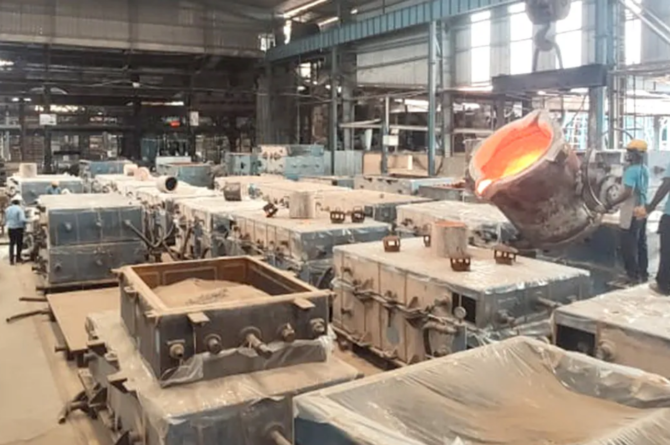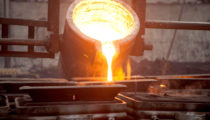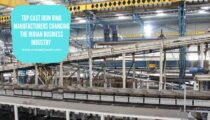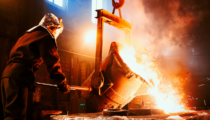Crescent Foundry, the leading counterweight manufacturers in the country, has…

Best Suitcase Counterweight Manufacturer- Everything You Need to Know
When a crane or a truck is being used to lift a heavy load, the last thing you want is for it to tip over and cause damages. This is ensured by counterweights – which keep the entire lifting system stable by providing a definite point of support, so that imbalances, and consequent accidents/damages, do not happen. Most standard quality mechanical systems use counterweights, to make lifting processes quicker, safer, more efficient, and glitch-free. Suitcase .counterweights are a specific type of counterweights – and we will discuss them in detail in what follows.
What Exactly Is A Counterweight?
Counterweights are, in essence, balancing systems – and like all other balancing systems, they too have a chief point of support, called ‘fulcrum’. In any mechanical lifting setup, these counterweights serve as the balancing units, stabilising the overall process. By placing a counterweight on the opposite side of the actual load, the stability is ensured (since an opposite force is generated). Apart from making lifting processes safer and more efficient, counterweights help in saving a lot of mechanical energy as well – since the overall ‘burden’ on the machines is reduced considerably.
Most modern mechanical lifting systems use counterweights. These systems include cranes, draw bridges, system elevators, tractors, lift trucks and others. The type of counterweight chosen depends on the nature of the system it will be fitted to, and the precise load lifting requirements.
What Are Counterweights Made Of?
Counterweights are typically made of metals – with cast iron counterweights and concrete counterweights being the most often used ones. Steel, titanium, tungsten and a few metal alloys can also be used to manufacture high-quality counterweights. Metal counterweights ensure optimal utilisation of the available space in a mechanical lifting system.
So, What Is A Suitcase Counterweight?
Counterweights that come with a hand grip casted in are known as suitcase counterweights. They can be of different sizes and designs, and are generally used on tractor bumpers to counter different loads (the actual specifications can vary from case to case). As such, they are alternatively called ‘tractor suitcase counterweights’, or ‘tractor counterweights’ as well. John Deere, New Holland, Agco and Massey Ferguson are some popular designs of suitcase counterweights (based on the design of the agricultural vehicle they are fitted to).
Cast Iron Suitcase Counterweights vs Concrete Suitcase Counterweights
The counterweights typically required for agricultural vehicles can be made of cast iron as well as concrete. Concrete counterweights can be significantly cheaper than their metal counterparts. However, several problems can crop up while using concrete weights – offsetting their cost benefits. Let us quickly take a look at the main advantages of cast iron counterweights over the concrete varieties:
- Custom shapes – Tractor counterweights often need to be reshaped and designed to fit the agricultural vehicle perfectly (this depends on the vehicle’s rear axle space). Such reshaping can easily cause a concrete counterweight to crack and become unusable. Customising the shape of a concrete weight involves hefty expenses too. On the other hand, cast iron counterweights can be finely shaped as per requirements, and are a lot less likely to get damaged.
- Material density – Cast iron suitcase counterweights can be upto 3X higher in terms of density than concrete weights. Hence, they can balance the load (i.e., create the required weight) by taking up a lot less space and volume. The density of concrete counterweights can be increased by adding magnetite, limonite and other such aggregates – but this process drives up the overall cost figures (and even after adding these, the density of concrete weights still remains lower than that of cast iron weights).
- More eco-friendly – Cast iron is obtained as a product of recycling. There are no waste products, no new raw materials are required, and there are no adverse effects on the environment. The same cannot be said about concrete counterweights, which need raw materials – while disposing them can also be an issue.
- Stress resistance – Concrete surfaces cannot be made as strong or hard as cast iron. Therefore, concrete weights can get cracked a lot more easily. The additional mounts/fastening screws that have to be used on counterweights can cause such damages (if concrete weights are being used). Suitcase counterweights made of cast iron are less affected by such cyclical stress, can withstand impacts, and are considerably more strain-resistant – thereby lowering the overall maintenance costs, and enhancing their usability.
In terms of quality, performance and overall reliability, cast iron suitcase weights are much better than concrete weights.
Main features of suitcase counterweights
Broadly speaking, the overall quality of suitcase counterweights is determined by three main factors. These are: a) the MOBILITY of the weight, b) the LOGISTICAL CONVENIENCE it offers, and c) the FLEXIBILITY it offers. A counterweight may have to be used for multiple balancing systems and as a part of different systems – and there should not be any problems in that.
Suitcase counterweights can be of different shapes and designs. Each counterweight is earmarked by the weight it is supposed to support/balance. Dimensional accuracy is yet another important feature of a suitcase weight – since that determines how efficiently it can be used. Leading counterweight manufacturers, like Crescent Foundry, also customise their suitcase counterweights as per the exact requirements and preferences of their clients/end-users.
Different Types Of Suitcase Counterweights
Apart from their physical differences (shape, design, etc.), suitcase counterweights also vary according to their standards – which is determined by the specifications provided by the original equipment manufacturer (OEM) company. The coating applied on the counterweights can also be either black, or bitumen, or anything else (as per customer requirements). Sizes of the counterweights also vary in accordance to their intended use (for instance, a small John Deere suitcase counterweight can be of ~40 lb or slightly higher). Weight brackets can be added to the counterweights in an incremental manner.
Suitcase Counterweights Are Evolving
Over the years, all types of counterweights have changed in terms of their manufacturing standards, types, applicability and better safety. Suitcase weights have not been an exception to this. The sizes (which can vary widely), the materials & finishes, the shapes, and the precise uses and functions have all evolved over time. With ongoing research, suitcase counterweights are likely to become more efficient in terms of designs and performances in future.
Selecting The Best Suitcase Counterweights
Using a good suitcase counterweight is absolutely critical for the proper functioning of a load-lifting system with tractors/other agricultural vehicles. As the load is gradually raised, the center of gravity of the tractor starts to move. In the absence of a counterweight, the shifting center of gravity is likely to cause imbalances – resulting in serious accidents and/or system breakdowns. The operators of the machines can also get irreparably damaged.
To avoid such risks, it is imperative to select a reliable suitcase counterweight. Users have to select manufactured counterweights with the requisite capabilities and quality assurances (instead of relying on homemade counterweights). Weights with linkage implements (3PL/3PH) or three point hitch implements are generally recommended. When the best counterweight has been selected and fitted to the designated part of the machine, the weight distribution becomes optimised. As a result, proper balance is maintained and the risks of mechanical problems are minimised.
As is evident from our discussion, suitcase counterweights are a vital cog in mechanical lifting systems with agricultural vehicles. They can be of different types, makes, materials and can come with different functionalities. The onus lies on the user to select the ideal suitcase weight for the lifting tasks on hand. With a properly fitted, well-functioning counterweight, the stability of lifting systems can indeed be taken to the next level.



